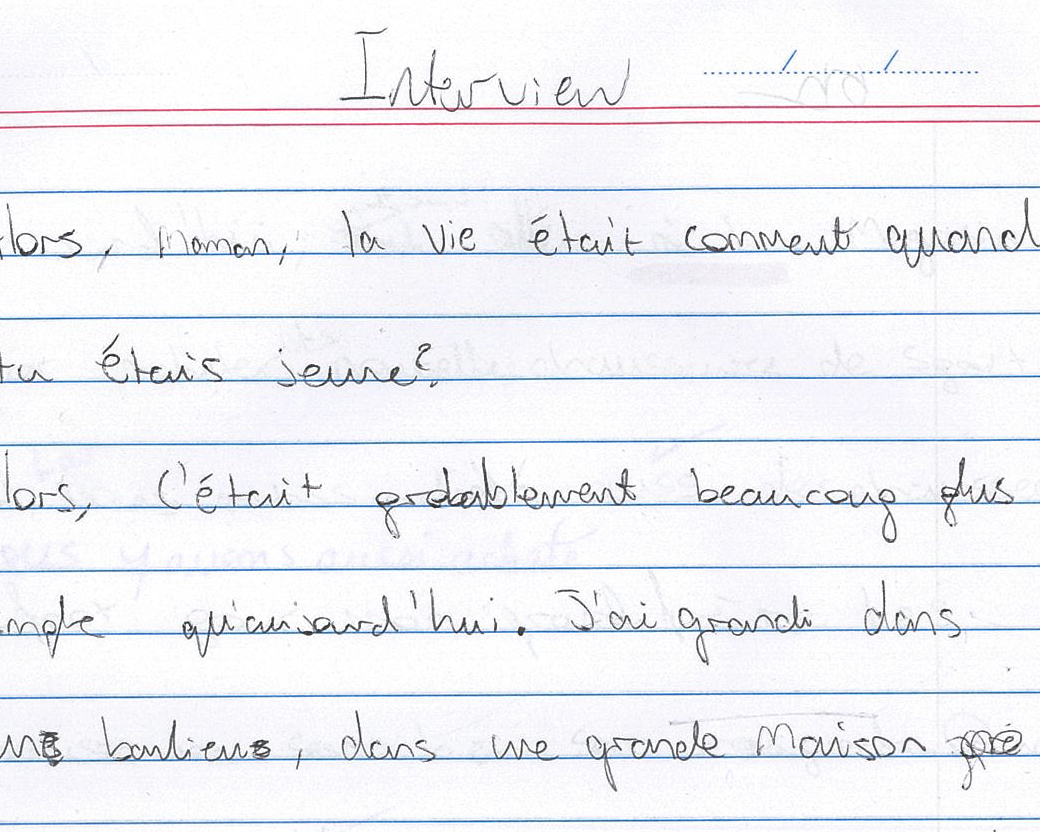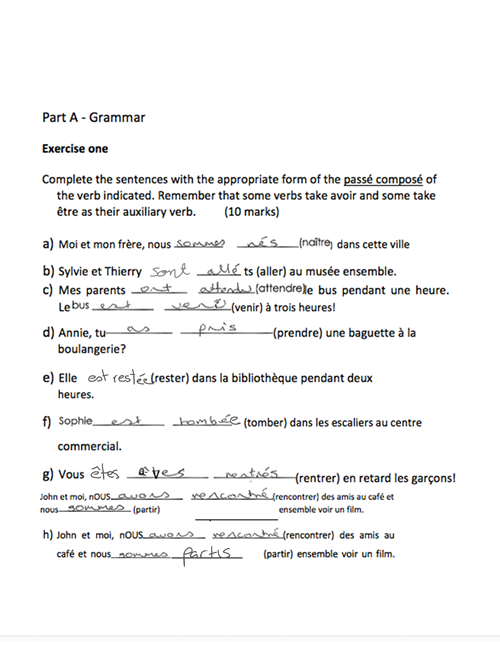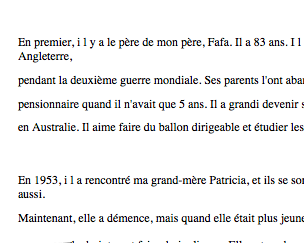Languages: French - Satisfactory - Years 9 and 10 (Year 7 entry)
Portfolio summary
This portfolio of student work shows that the student uses written and spoken French to socialise with peers (WS3), teachers (WS5) and other French speakers in local contexts and online environments (WS2). The student communicates about immediate and personal interests and involvements, such as family (WS4), friends, interests (WS5), and some broader social and cultural issues, such as health (WS2, WS3).The student approximates rhythms and intonation patterns of extended and compound sentences, using syllable combinations, and building fluency and accuracy in pronunciation, pitch and stress (WS3, WS5, WS7). The student uses the passé composé tense of regular verbs with avoir (WS7) and être, noticing that the participe passé form of verbs with être involves gender and number agreement (WS1, WS2, WS3, WS4). The student identifies the form and function of reflexive verbs (WS1, WS3, WS4) and uses appropriate forms of possessive adjectives in own language production (WS3, WS5). The student locates, interprets and analyses information from different print, digital and community sources, and communicates information, ideas and views in a range of contexts using different modes of presentation (WS2). The student uses expressive and descriptive vocabulary (WS4, WS5) to talk about feelings and experiences (WS2, WS3). The student creates imaginative and performative texts for a range of purposes (WS3), such as entertaining (WS4) or persuading (WS2). The student uses French to narrate and describe, matching modes of presentation to context and intended audience (WS2, WS4, WS5). The student creates bilingual texts and interprets observed interactions in terms of cultural practices and comparisons (WS5, WS6).
The student identifies differences between spoken and written forms of French (WS2), comparing these with English (WS6). The student makes distinctions between familiar text types, such as greetings (WS4), commenting on differences in language features and text structures (WS2, WS5). The student uses metalanguage for talking about language (WS1, WS7) such as formal and informal language (WS2, WS3, WS5, WS6), and for reflecting on the experience of French language and culture learning (WS5, WS6, WS7). The student identifies relationships between parts of words (WS1, WS6, WS7) and stems of words (WS4). The student identifies the validity of different perspectives, and makes comparisons across languages and cultures (WS3, WS6), drawing from texts which relate to familiar routines and daily life (WS6). The student explains French terms and expressions that reflect cultural practices (WS3). The student reflects on own cultural identity in light of experience of learning French (WS3, WS5, WS6), discussing how ideas and ways of communicating are influenced by membership of cultural groups (WS6).
The student identifies differences between spoken and written forms of French (WS2), comparing these with English (WS6). The student makes distinctions between familiar text types, such as greetings (WS4), commenting on differences in language features and text structures (WS2, WS5). The student uses metalanguage for talking about language (WS1, WS7) such as formal and informal language (WS2, WS3, WS5, WS6), and for reflecting on the experience of French language and culture learning (WS5, WS6, WS7). The student identifies relationships between parts of words (WS1, WS6, WS7) and stems of words (WS4). The student identifies the validity of different perspectives, and makes comparisons across languages and cultures (WS3, WS6), drawing from texts which relate to familiar routines and daily life (WS6). The student explains French terms and expressions that reflect cultural practices (WS3). The student reflects on own cultural identity in light of experience of learning French (WS3, WS5, WS6), discussing how ideas and ways of communicating are influenced by membership of cultural groups (WS6).







